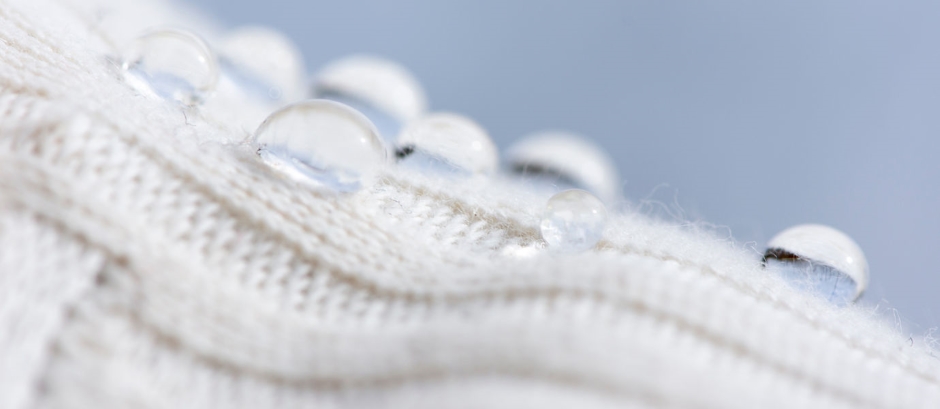The coating, developed by a team from Aalto University in Finland, uses carnauba wax, a substance used in medicines, foodstuffs, plus the surface treatment of fruits and car waxes.
During the processing, the wax is thawed and decomposed in water into wax particles that are anionic, like cellulose. For the wax particles to adhere well to the cellulose surface, a cationic substance is needed as a buffer, since the oppositely charged particles attract one another. In previous studies, a natural protein called polylysine was used for this.
“Polylysine is very expensive so in our current study, it's been substituted with a much cheaper, cationic starch that's already commercially available,” said Aalto University PhD student Nina Forsman.
According to Aalto University, cationic starch is not quite as effective as polylysine, but two layers of the starch mixed with two wax particles are enough to make the textile waterproof.
The researchers compared the breathability of textiles treated with natural wax with textiles that had been treated with commercial products. Ecological wax particles made the textiles waterproof and retained their breathability, while textiles treated with commercial controls had reduced breathability.
The research team included Matilda Tuure who designed and manufactured three coats on which the wax coatings were tested.

The wax coating can be applied to the textile by dipping, spraying or brushing onto the surface of the textile. In tests, the researchers found that dipping is suitable for smaller items of clothing and spraying or brushing works best for larger ones. In industrial-scale production, wax treatment could be part of the textile finishing process along with the colour pigmentation of the wax, which makes simultaneous dyeing and waterproofing possible.
The research team found that the wax coating is not resistant to detergent washing, restricting the product to less frequently washed outer garments such as jackets. Consumers could potentially apply the coating themselves after each wash, but Aalto said this will require more research and development.
The effect of the drying temperature after wax treatment on waterproofing was also observed, and it was concluded that the best water resistance is obtained when the drying temperature is lower than the melting temperature of the wax.
"We tested the coating on different textile materials: viscose, tencel, cotton, hemp and cotton knitwear. We found that the surface roughness of textiles affects how well it repels water - the rougher the surface, the better. This is because, on a rough surface, water droplets contact the textile surface in a smaller area," Forsman said in a statement.




Glasgow trial explores AR cues for autonomous road safety
They've ploughed into a few vulnerable road users in the past. Making that less likely will make it spectacularly easy to stop the traffic for...